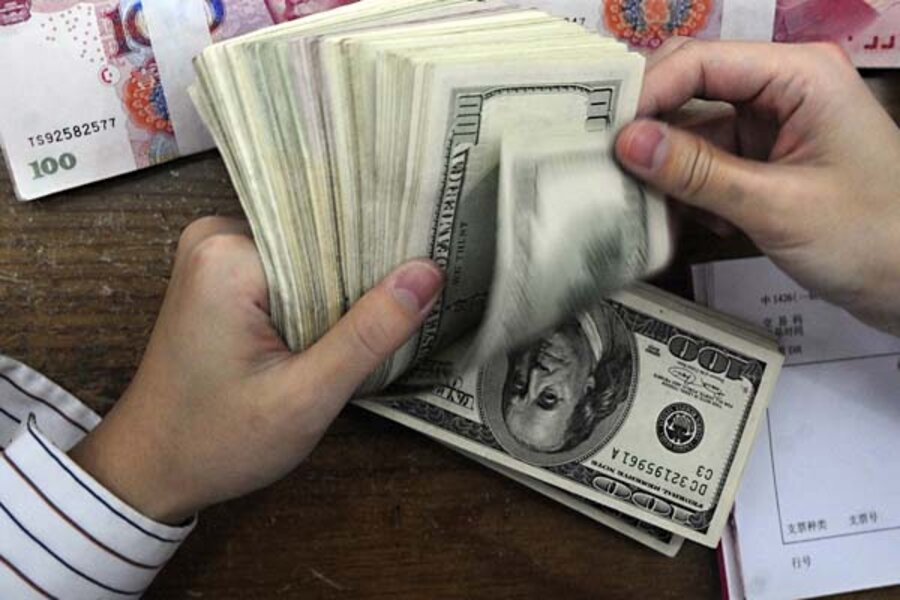What came first, income stagnation or inequality?
Loading...
Q: Do we know what caused income stagnation or income inequality? Did they both start to occur at the same time? Can we even be sure that they are related?
A: Technically, the link between stagnation for middle and low-income households and inequality is the distribution of economic growth. That is, if the economy is expanding, spinning off income growth, yet that growth accrues disproportionately to higher income households, then you can have a stagnant median amidst rising high-incomes.
That said, inequality growth does not necessarily imply stagnation. An economy could, of course, have incomes growing (in real terms, i.e., after inflation) for each income class (low, middle, high) but growing faster at the top. That was basically the UK story up until the 2000s, when middle-class earnings began to actually lose ground in real terms.
This figure is useful in that it shows how real family incomes grew together for many years. The figure plots real family income for 20th , 50th , and 90th percentile families since the 1940s, indexed to 100 in 1973 (so the lines represent percentage growth off of that base). Starting in the late 1970s, we see much more inequality in the growth rates, with high incomes risings, low incomes generally flat, and middle incomes in between. In fact, outside of the period of full employment in the latter 1990s, there was little real income growth for middle and low income families. (As this document explains, these data usefully offer a long times series, but they lack important income components, like capital gains, which means they fail to capture high-end income dynamics—other figures in the paper that correct that omission.)
As to what caused all this, that’s a big question which I tackle in dozens of posts–I’m won’t dig them all up but many are tagged as being in the “inequality” category.
Q: How would you respond to the assertion that people who pay 15% capital gains tax shouldn’t pay a higher rate because they actually are taxed twice?
A: I’d respond by saying they’re not. Taxed twice, that is. Capital gains are income you get from selling an appreciated asset. If you’re friend Pablo paints a picture of your dog wearing crooked glasses, sells it to you for 10 bucks, becomes a famous animal portrait painter, and you then sell it for 100 bucks, that extra $90 is your capital gain.
The reason usually given for taxing it at a lower rate is that by doing so, we’ll stimulate more investment. At a higher rate, people will be less motivated to buy and sell capital assets. I strongly disagree and more importantly, so does the evidence.
It’s dividends where we hear more whining about double taxation. Corporations pay taxes on their profits, and when distribute those profits to shareholders as dividends, those are also taxed. But this argument too, is specious.
–Dividends are not special: income of all types is often taxed more than once. Wage income, for example, can be triple-taxed—income tax, payroll tax, and sales tax. If you live in a state with income tax, make that four times! This is a common feature of the tax code, like it or not, and dividends are not special.
–In fact, I’d argue that corporate profits paid out in dividends often are taxed less than wage income. Many dividend-paying corporations—most recently GE, Verizon, Boeing—pay hardly any corporate tax at all on their profits, and in fact get money back from the Treasury in corporate subsidies. Read this now!
Q: Why would India want to strengthen the rupee when it already has very strong laws restricting foreign investment? And does a central bank in a country that does not have a reserve currency, like the dollar or the Euro, face different decisions regarding interest rates and currency value?
A: Oftentimes, monetary authorities and policy makers view the decline in their currency as a vote against their country and their policy agenda. Currency markets may judge the Indian economy too exposed to high inflation—around 9% last month!—growing trade imbalances, political instability, slow growth, etc. and so they sell their rupee holdings and the value of the currency declines.
For a country like India that still depends on investment from abroad, this can be seen as a pretty threatening trend. After all, if global investors are shorting your currency, it means you’re going to have to raise interest rates to borrow more to service your debt (India has been running budget deficits in the 5% of GDP range). Higher rates in turn make it a) more expensive to service your debt burden and b) can slow internal growth (by raising the cost of capital).
On the other hand, a weak currency helps with exports and in fact, this dynamic plays a critical role in rebalancing some of the relationships noted above, particularly trade imbalances. For example, when slow growth leads to a currency devaluation, that helps boost net exports and thus pushes growth back up.
At any rate, the Indian central bank has responded to the falling rupee by selling its dollar holdings to try to boost the value of the rupee compared to the dollar. But any increase in the rupee from such interventions hasn’t stuck.
In part, this result relates to your second question. A country with a global reserve currency—meaning the ones currency investors judge to be least responsive to market fluctuations—has a huge advantage in this context. The US dollar plays this role and as you can see, even with a protracted recession, terrible policy making (e.g., looming gov’t shutdowns, the debt ceiling debacle, lousy fiscal policy), and persistent trade deficits, we’re still a flight-to-safety haven, which is why interest rates on our Treasuries remain so low.





